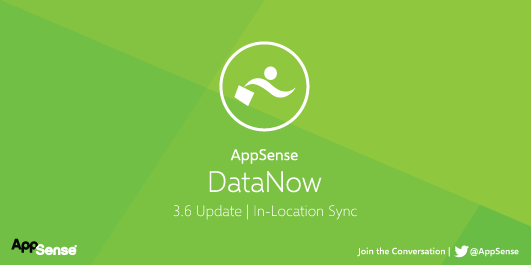How do you sync and centralize user data without pain? Hint: Location, Location, Location
*This post originally appeared on the AppSense blog prior to the rebrand in January 2017, when AppSense, LANDESK, Shavlik, Wavelink, and HEAT Software merged under the new name Ivanti.

This is the first of two blogs that will explore the latest DataNow feature: In-Location Sync. This latest addition to our Enterprise File Sync and Share solution reflects what we’re well known for at AppSense, delivering a killer user experience while making IT management easier.
So what is the challenge, where is the pain?
Sync technologies are great. Sync has replaced (or by now should have) the poor user experience and support headaches that stem from using Windows’ built-in Offline Files feature. Sync is also great for mobility, allowing users to access files without the need for slow and frustrating VPN connections. However, most sync technologies go no further than providing mobility and sharing, especially those sync solutions delivered by cloud vendors.
What about the common IT workflows that traditional data sync products do not replace: migration, recovery and desktop hardware refresh? IT teams require other tools to support these laborious, common tasks which can seriously impact user productivity and the success of desktop IT projects.
Innovative administrators are looking to leverage sync solutions for more than data access.
How are people solving the problem?
Understanding that sync can be seen as real-time backup is not a massive leap, however correctly configuring a user’s profile is!
Administrators can use built-in features like Folder Redirection, symbolic links and junction points to provide the end user with a native experience when accessing their data stored and synced remotely. However, this comes at a cost, one that can be quite significant and not obvious at the start.
Working with customers, we see two main pain points created when using such redirections:
- Legacy application and other compatibility issues
- Problems with a two-step data migration, where data is first copied to another folder before it is synced
The first pain point is easy to see, and, depending on the size of the business, can go from a being a mild pain to becoming a devastating IT roadblock. We’ve seen how something as simple as Windows’ Search feature not functioning halt a consolidation project in its tracks, all because the user experience takes a hit. In fact, there are other hidden issues. Nothing prevents applications from using %USERPROFILE%\My Documents (fun fact, Microsoft includes a hidden symbolic link just in case they do, but applications bypass it). When applications save files to the wrong location, users panic when they think their files have gone!
A two-step migration is the kind of issue customers don’t see coming until they’re in the middle of it, which often means its much too late. Copying or redirecting user data to another folder so it can be synced can be a slow and disruptive operation.
What is AppSense doing about it?
The newest feature in our DataNow 3.6 Update 1 provides our customers with an elegant sync solution that bridges the gap between sync and backup.
In-Location Sync does exactly what the title implies. Files and folders are synchronised from their default locations. No need to copy, move, monitor, or redirect. This is achieved with a simple configuration and no change to a user’s profile, which means zero impact to end user productivity and no management complexity.
Now sync can solve the not only the access and mobility issue, but it can also provide the business with a constant state of readiness for migration, break/fix or endpoint refreshes.
This is great news for our customers. And while I’ve not covered the advanced bandwidth management, file sync controls, and exclusions in this post, you can visit our website to learn more about how IT teams globally are benefiting from those features.
Want to know even more about In-Location Sync?
Tomorrow Robin will be releasing a technical blog post all about In-Location Sync and how easy it is to get “From Zero to Hero with In-Location Sync”. A must-read for all those administrators that know somewhere between sync and backup is the data silver bullet.